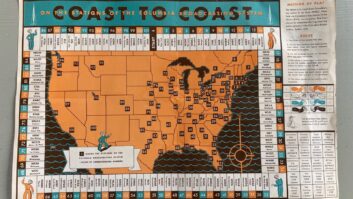
Radio Listener Market Credit: Borrell Associates/Scarborough Research, from “The Future of Legacy Media: With 5 Years of Digital Disruption Ahead, What Happens Next?”
Market researcher Borrell Associates has released a new report entitled, “The Future of Legacy Media: With 5 Years of Digital Disruption Ahead, What Happens Next?,” and 2018 does not appear likely to be broadcast radio’s year.
The research firm’s findings on the state of radio are summed up in the chapter’s headline, “Radio: Treading Water.” This statement references the fact, that while listenership has only declined by 4% in the past 13 years, ad spend for broadcast radio has declined significantly — down nearly one-third in the same period — and predictions for the next five years forecast minimal gains.
Online radio’s increasing share of the marketplace is cited as a major reason for the decline in ad spend as about one-third of adults 30 and younger and over 25% of those under 40 listen to streaming services. Pandora is currently the most successful in market penetration, capturing four-fifths of online listening. The report said that it has grown to be half the size of Cumulus Media, approximately equal to Cox Radio and Radio One, and twice the size of Beasley, Emmis and Salem Communications. Pandora’s revenue was targeted to reach a half billion dollars by the end of 2013.
Tracking only broadcast radio, Borrell projects that the current rate of listening, an average of 93.5 minutes per day, will decline 12.5% to a daily average of 81.9 minutes.
However, not all of the traditional radio statistics are focused on doom and gloom for legacy media.
Although popular, Pandora is less likely than traditional broadcast radio to be consumed as the only form of listening. More consumers (38.6%) listen to both Pandora and AM/FM, while 26.2% listen to only Pandora and 35.2% stick to just radio.
These more disheartening numbers are buoyed by Arbitron’s findings that radio is listened to at least weekly for 93% of the population 12 years and older. Also, even as the connected car is increasingly promoted in the marketplace, AM and FM radio still find a safe haven in motor vehicles, with three-fifths of radio listening done while driving.
Smaller local stations are also expected to retain their relevance, even after urban stations see losses.










